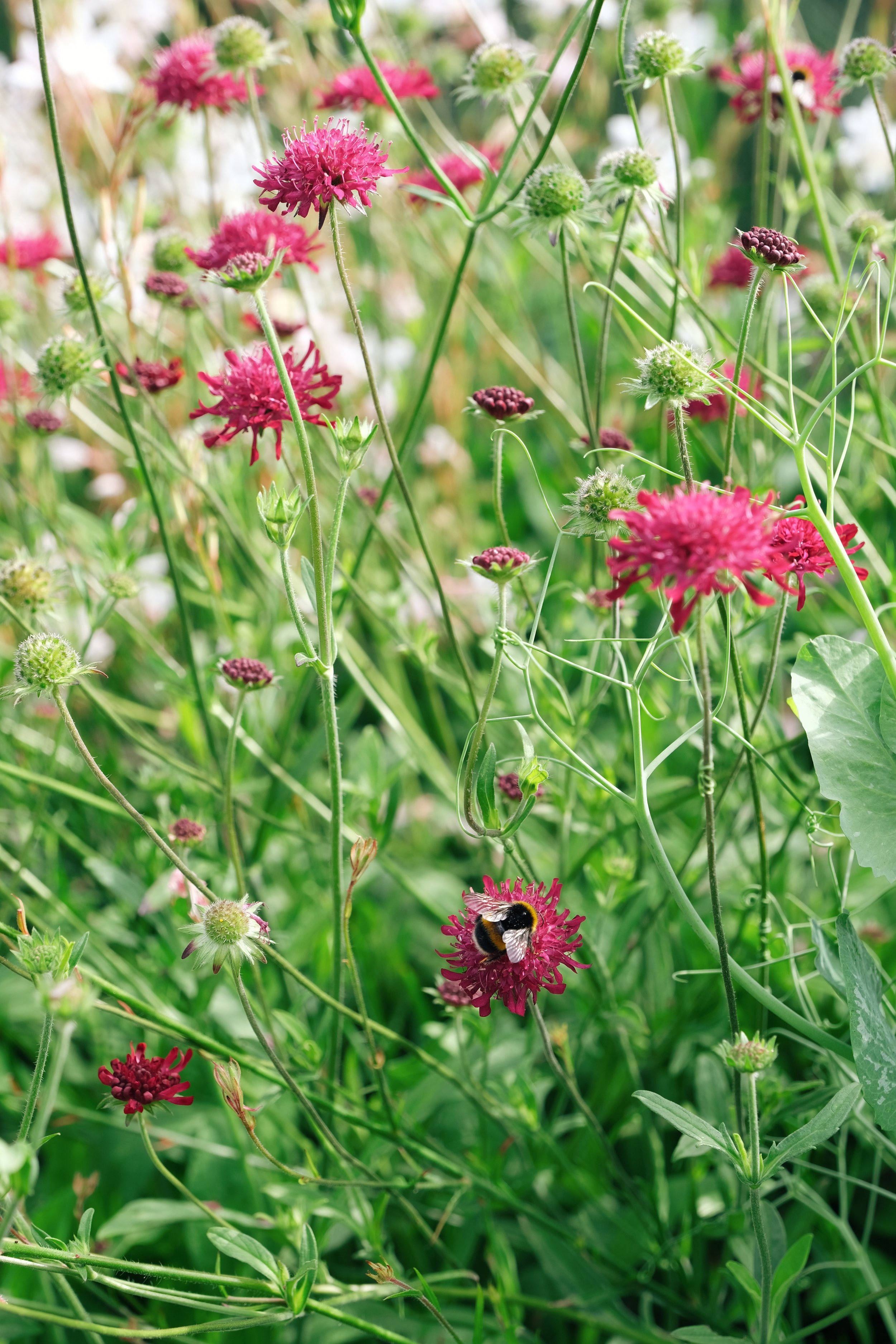PERSICARIA
Persicaria is a plant that emerged from the background for me, its spires dancing in my periphery as I wandered gardens, distracted by larger, shoutier specimens.
But over this last autumn, amid the gradual melt of the summer flowering perennials, there was no ignoring the action it bought to tiring beds.
As a genus, the name persicaria certainly pops up a lot in invasive plant lists! But its vigorous attitude to life can be seen as a plus when researching and selecting the right (less naughty) specimens for your space.
Somewhat confusingly, persicaria has also run the gauntlet of reclassification over the years, meaning plants you look up may be labelled as something not as immediately recognisable. Until quite recently persicaria used to sit within a broader genus called polygonum and some people will still refer to the plants as ‘polygonums’. There is also the fabulous bottle brush like Persicaria bistorta which is also classified as Bistorta officinalis. As a genus, persicaria is commonly known as knotweed, smartweed or fleece flower.
We’ll get there together!
The persicaria varieties I am most interested in are clump-forming perennials. By nature most grow best in moist, fertile soils coping well with full sun to part shade. With this said, I have seen varieties appear in brilliant health in dryer spaces where they prove to be hardy to frost, generously free flowering and long-lived. Clumping plants can be lifted and divided when they’ve grown too large in autumn/early spring. The creepier varieties can just have sections uprooted and easily replanted.
Persicaria amplexicaulis at Flaxmere Garden
Persicaria amplexicaulis at Flaxmere Garden with echinacea and wands of Stipa gigantea.
Persicara foliage is often recognisable with its elongated, heart-shaped leaves, although colour can range greatly through vivid greens to deep burgundy and feature variegation depending on the variety. All present slim upright stems that present spire-formed blooms in a range of colours. For me, on a constant plant hunt for tough options to go in my problem spots, I am attracted by their spreading habit and ability to look just as eye catching en masse as they do mingling with neighbours, flowering from summer, deep into autumn.
In New Zealand gardens I have stumbled across many examples of red flowering persicaria (not all identified at the time!) that have ranged in large and bulky to a little more refined. On research I think one of the most prevalent varieties available to us here in New Zealand is Persicaria amplexicaulis ‘Firetail’ which spreads to about 1.2 m high and wide. Piet Oudolf has made famous his prefered Persicaria amplexicaulis ‘Firedance’ which isn’t as widely available here.
On a trip earlier this year I dropped into the brilliant Blueskin Nurseries, just north of Dunedin where they had a brilliant array of white, pink and red Persicaria amplexicaulis specimens on available.
Persicaria amplexicaulis (unknown variety).
Persicaria bistorta -
Image source - Wikimedia Commons
Persicaria microcephala ‘Red Dragon’
Image source - Wikimedia Commons
Persicaria affinis - a sprawling ground cover
Image source - Wikimedia Commons
Persicaria microcephala ‘Red Dragon’
Image source - Wikimedia Commons
For those interested in less bold-hued flowers, Persicaria ‘White Eastfield’ provides a lovely option with its pure white spires, growing to around 90 cm. However, if you are on a hunt for depth Persicaria ‘Red Dragon’ might be the answer with its deep burgundy leaves and smaller panicled white flowers.
I must say that I am really attracted to the Bistorta officinalis ‘Superba’ with its marshmallow, bottlebrush blooms but I haven’t had much luck locating it here in New Zealand. I’m afraid the same can be said for Persicaria affinis (aka Bistorta affinis) which is a lower-growing, spreading ground cover.
In terms of the rebels of this group. Here in NZ Persicaria maculosa (willow weed) is a problematic sprawling annual that infiltrates crops. And Persicaria hydropiper (water pepper) spreads around waterways and ditches.
Provided links to plants are chosen by Julia with no bias - simply to connect with the best imagery and information to aid the reader on that plant.
Not affiliate or sponsored links are included - please beware they may contain some seasonal information from other countries that differ from the one you are in!
MORE PLANT PROFILES TO EXPLORE










Cacti have slipped from ‘collections’ into the spotlight they deserve as hardy and outrageously sculptural elements able to ignite any type of planting. Read on to learn about the plants that cope with the climatic extremes of Central Victoria, Australia.